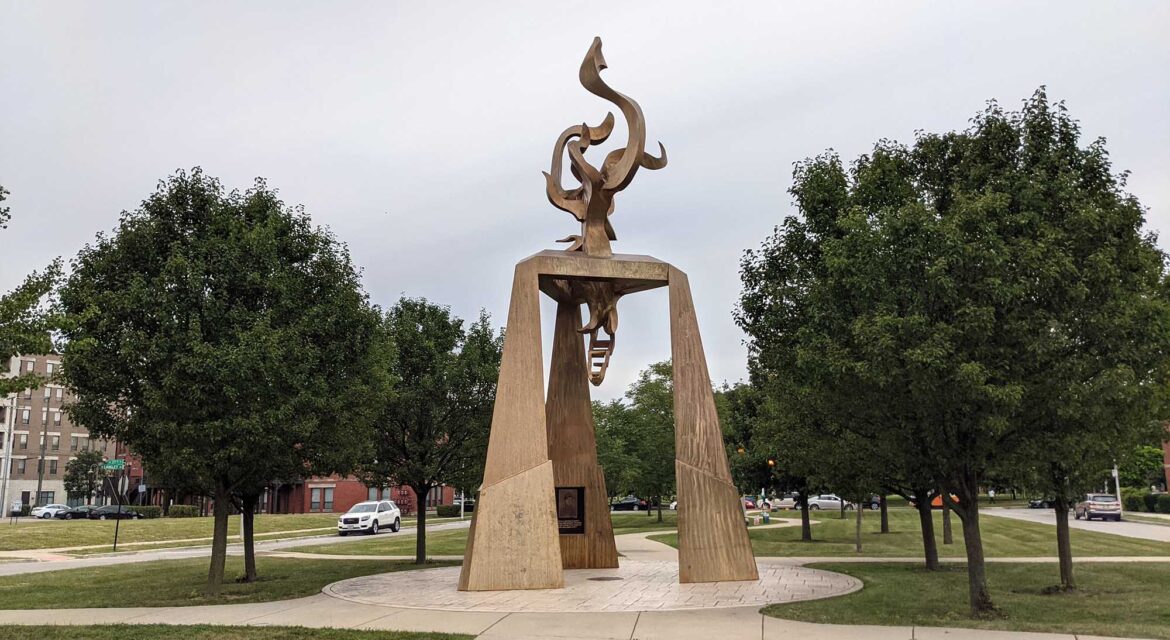 Ida B. Wells was an activist and journalist whose words and actions changed the face of the civil rights movement in Chicago, Illinois. Located in the Bronzeville neighborhood where she once lived, the Light of Truth Ida B. Wells National Monument has been able to celebrate her legacy while simultaneously transforming the space and community in postive ways.
Ida B. Wells was an activist and journalist whose words and actions changed the face of the civil rights movement in Chicago, Illinois. Located in the Bronzeville neighborhood where she once lived, the Light of Truth Ida B. Wells National Monument has been able to celebrate her legacy while simultaneously transforming the space and community in postive ways.

“Turn the light of truth upon them”
 An early leader in the civil rights movement, Ida B. Wells moved to Chicago in 1895 after an early career as a teacher and anti-segregation activist. In the Bronzeville neighborhood where she made her home, she continued her efforts to both enable civil rights and suffrage for women. These efforts saw her open Chicago’s first kindergarten for Black children and become one of the founders of the NAACP. After dying in 1931, she was soon commemorated with the creation of the Ida B. Wells Homes housing project.
An early leader in the civil rights movement, Ida B. Wells moved to Chicago in 1895 after an early career as a teacher and anti-segregation activist. In the Bronzeville neighborhood where she made her home, she continued her efforts to both enable civil rights and suffrage for women. These efforts saw her open Chicago’s first kindergarten for Black children and become one of the founders of the NAACP. After dying in 1931, she was soon commemorated with the creation of the Ida B. Wells Homes housing project.
This project was torn down in 2011, clearing the way for a monument to Wells that was championed by her great-granddaughter. Financed by contributions made during a fundraising campaign over several years, the monument was dedicated in 2021 and donated to the City of Chicago’s Public Art Collection.
Envisioned as an abstract and interpretative monumental artwork honoring her life and works, the name of the monument stems from words that Wells herself once spoke: “The way to right wrongs is to turn the light of truth upon them.” The images of Ida B. Wells at different points in her life as well as excerpts of her writing that are located on the legs of the piece are easily identifiable but the abstract shape at the top of the monument is far more abstract. Many have come up with their own interpretation of what this shape represents, helping to draw further attention to it from both residents and visitors.
These are the types of interactions that have allowed the Ida B. Wells National Monument to make such a positive impact on Chicago’s Bronzeville neighborhood. The site has become a hub of activity for organized events and impromptu gatherings, showcasing what’s possible when landmarks embrace connections between history, people and what were previously underutilized spaces.

Connecting People, Community and Legacy
 As the first traditional large-scale civic memorial to Ida B. Wells and one of the first monuments for a Black woman in Chicago, the Ida B. Wells National Monument has positively impacted the entire Bronzeville community. By celebrating her legacy in such a prominent manner, it highlights the many ways that communities can benefit when a monument actively embraces the people and history that have defined it.
As the first traditional large-scale civic memorial to Ida B. Wells and one of the first monuments for a Black woman in Chicago, the Ida B. Wells National Monument has positively impacted the entire Bronzeville community. By celebrating her legacy in such a prominent manner, it highlights the many ways that communities can benefit when a monument actively embraces the people and history that have defined it.

